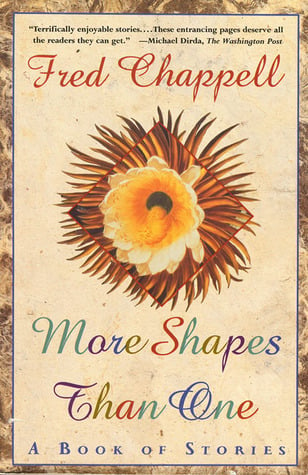Over the last three decades Fred Chappell has been steadily accumulating both an enviable publishing record—he has some twenty novels and collections of poems and stories to his credit—and a well-deserved reputation as one of the South’s foremost men of letters. His latest book of short fictions, the aptly tided More Shapes Than One, may make the second designation less important; for Chappell, it is increasingly apparent, is a universalist whose imagination ranges over the globe. His native North Carolina informs his work and often provides its settings, but he is not to be automatically enlisted on any regional roll call.
Chappell’s work is characterized by an exquisite attention to language and mood; his fiction is less concerned with action than with ideas, the more elevated the better. (In this Chappell resembles Borges and especially Poe, both of whom he obviously admires.) The stories in More Shapes Than One do not break any new ground—they are unmistakably Chappell’s, told in voices we have come to recognize—but neither do they give up any.
The book does contain a few surprises. One is Chappell’s turn to Europe for several of his tales, involving historical figures like French composer Jacques Offenbach, German philosopher Ludwig Feuerbach, and Swedish taxonomist Karl von Linne, who Chappell, in a neat dissection of the European passion for order, depicts as puzzling over a mysterious tropical plant that escapes all his attempts at classification. Another is his growing identification with the all but forgotten school of paranoiac fabulists published by Arkham House in the middle years of this century, notably the ghoulish H.P. Lovecraft, though Chappell is a better writer than any of them.
Three stories in particular illustrate Chappell’s newfound fondness for the macabre: “The Somewhere Doors,” “Mankind Journeys Through the Forest of Symbols,” and “The Adder.” The first involves a writer of Weird Tales persuasion who is co-opted by extraterrestrials; in another time and place it might have made a fine episode of The Twilight Zone. Chappell takes risks in treating such material, which could readily fall into pitfalls of formula. The second proceeds from one of the most irresistible openings imaginable—”There was a dream, and a gaudy big thing it was, too, and for six hours it had been blocking Highway 51 between Turkey Knob and Ember Forks”—to a story line that turns Faulknerian romanticism on its ear, and then some; Chappell is clearly having a joke on his own Southernness in detailing the effects of this “thick and goofy” renegade dream on the unsuspecting hill folk of North Carolina.
The last, however, is a true tour de force, a Borgesian nightmare in which a copy of the devilish Necromicon—an alchemical treatise of the early Middle Ages, also called “The Adder” for its imputed poisonous qualities—finds its way into the stock of a small-town antiquarian bookseller. There it begins to devour other books, vampirishly draining the force from their words while amassing ever more sinister powers. It is to Chappell’s credit that this unlikely turn of events seems, by story’s end, to be entirely plausible, and that a meek bookman should be the one to save the world from the forces of darkness. “The Adder” approaches perfection as a spooky tale, and is a sure bet to turn up henceforth in every horror anthology worth its sticker price.
Underlying Chappell’s work, macabre or not, is a celebration of the act of creation. That Chappell loves to write, that, like Flaubert, he loves turning phrases until the mot juste sparkles on the page, is clear enough; his bookish characters, to the lowliest shotgunshack pulp writer, vindicate the necessity and usefulness of the writer’s craft, and attest to its mysteries:
He could write only these melancholy twilight visions of things distant in time and space, stories that seem not entirely his, but gifts or visitations from a source at which he could not guess. His most difficult task was to find words for them; he was a shy man, naturally taciturn, and he considered himself unhandy with language. But when the stories came to him, the impulse to write them down was too strong to resist. The stories compelled him to write, to struggle with phrases in a way that felt incongruous to his personality. And so he wrote, stealing the hours from his bed, the strength from his body. Each stroke of the pen, every noun and comma and period, brought him closer to the beautiful release that he always felt, as he did now, upon completion of a tale.
More Shapes Than One, protean book that it is, abounds in such moments of “beautiful release.” However improbable the directions some of his weirder fictions take, they add up to a thoroughly delightful collection that confirms, once again, Fred Chappell’s importance to contemporary letters.
[More Shapes Than One, by Fred Chappell (New York: St. Martin’s Press) 179 pp., $17.95]



Leave a Reply